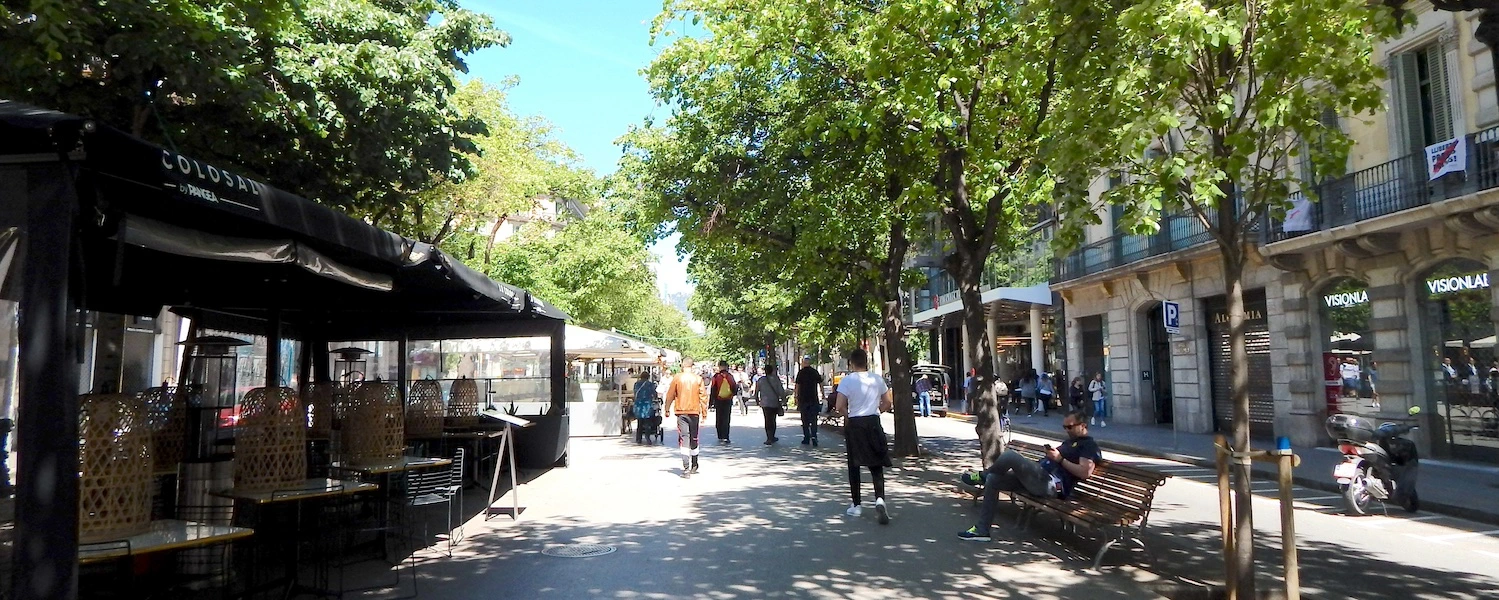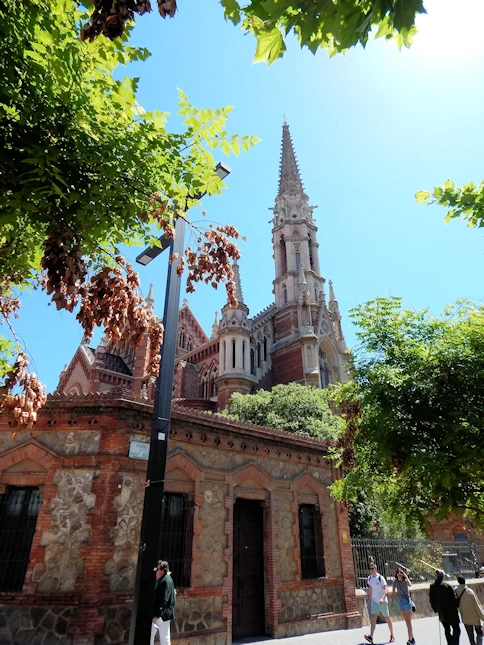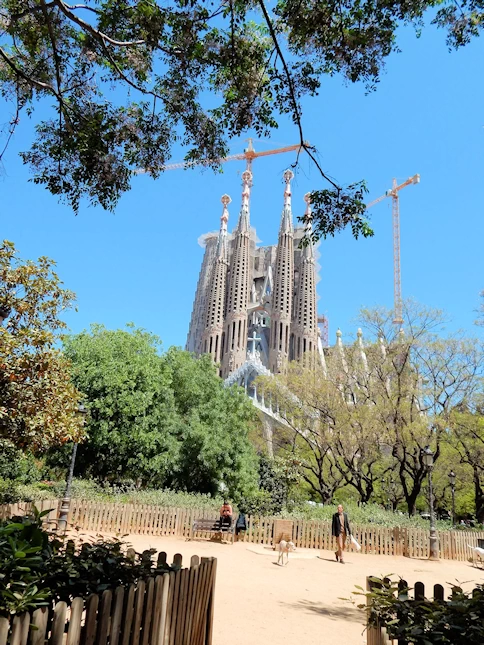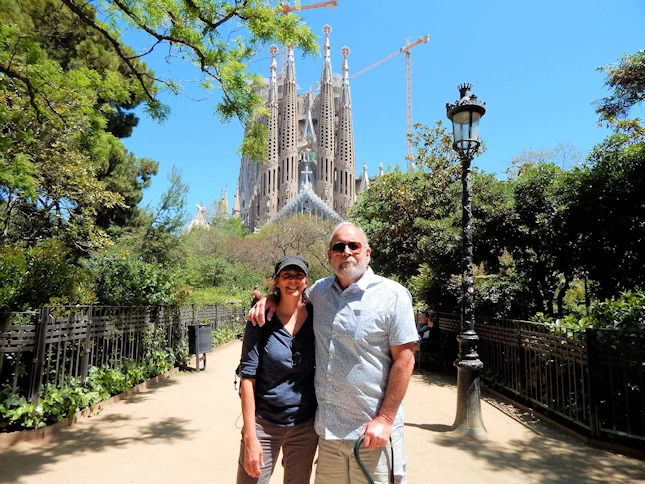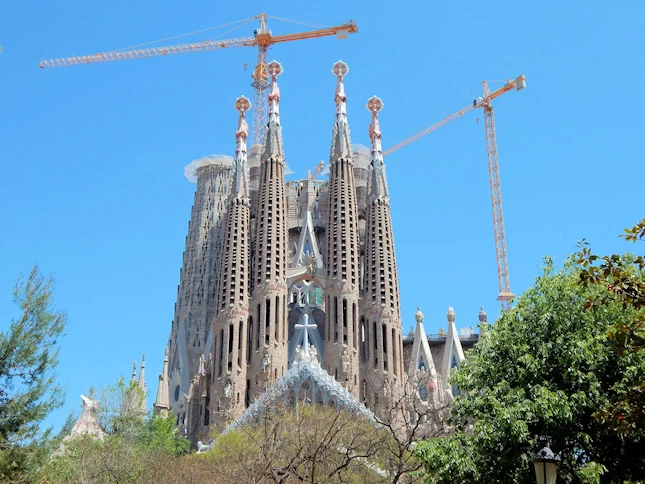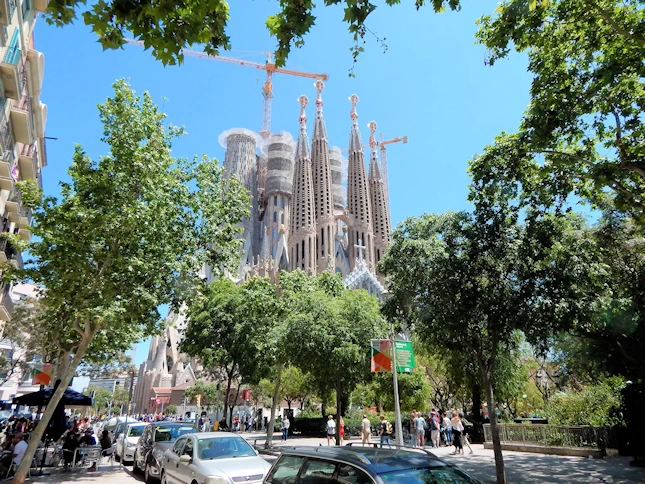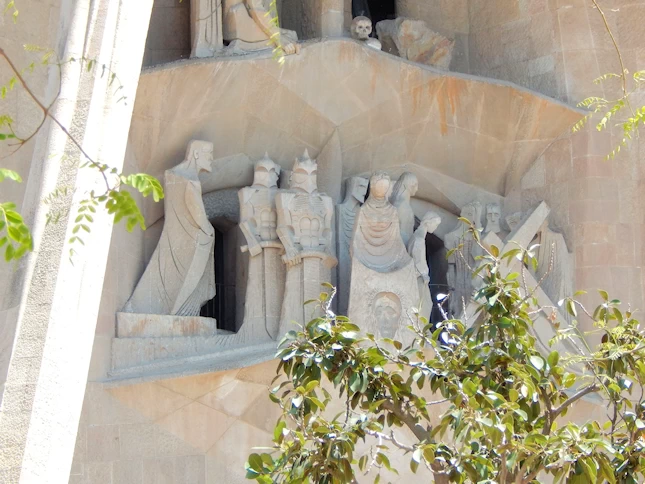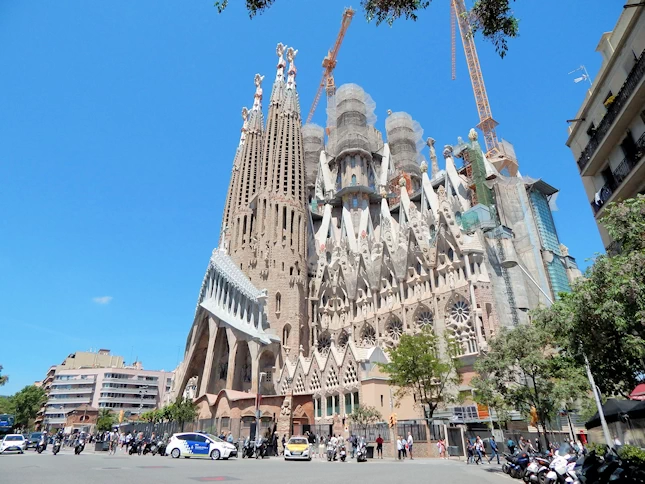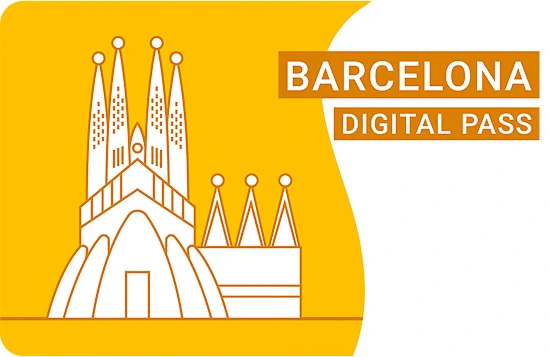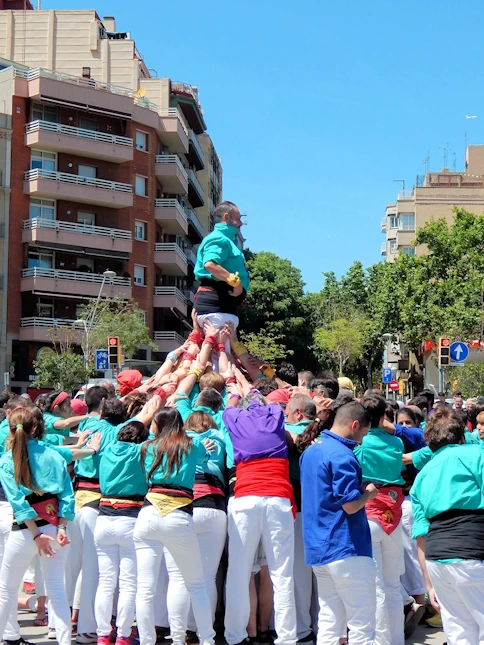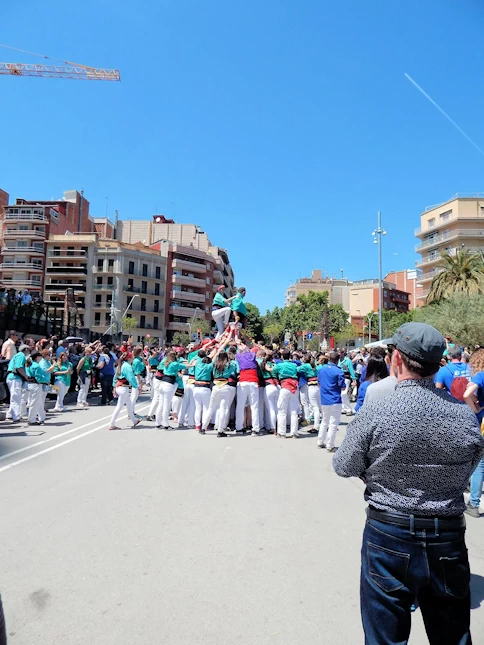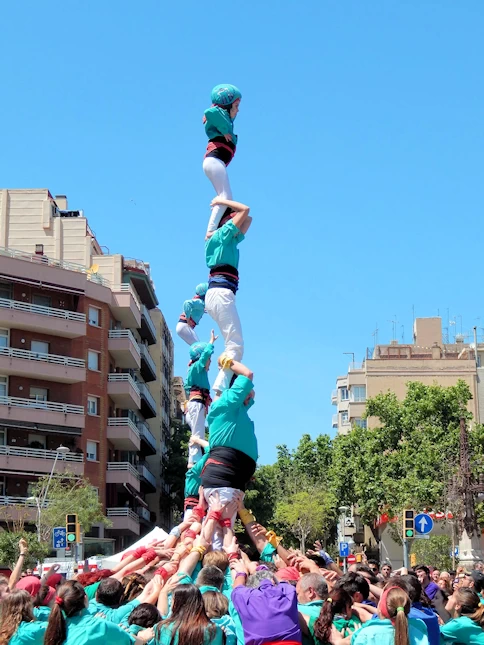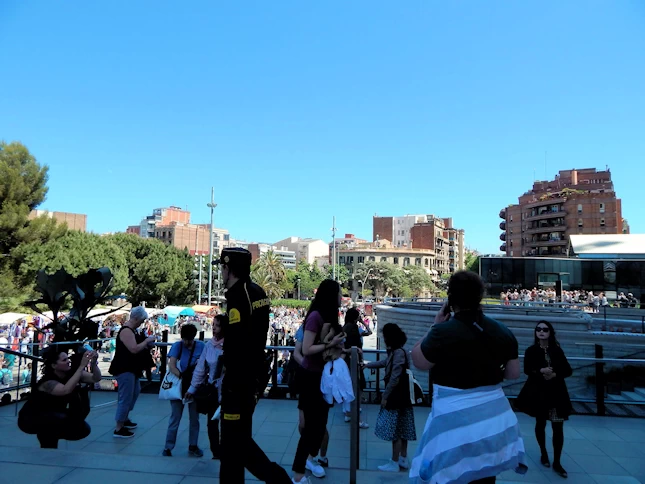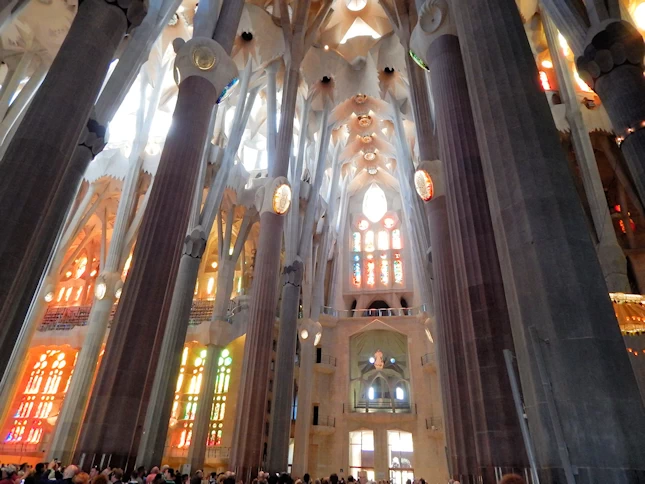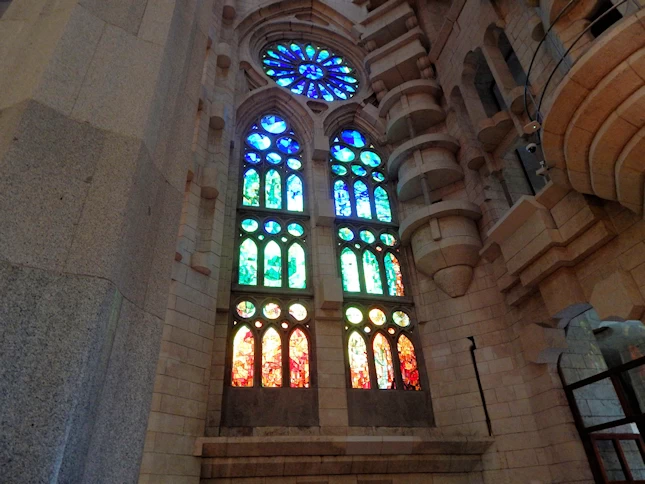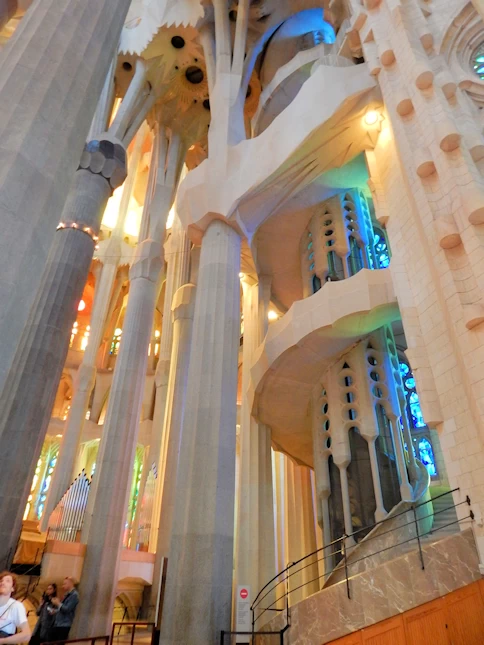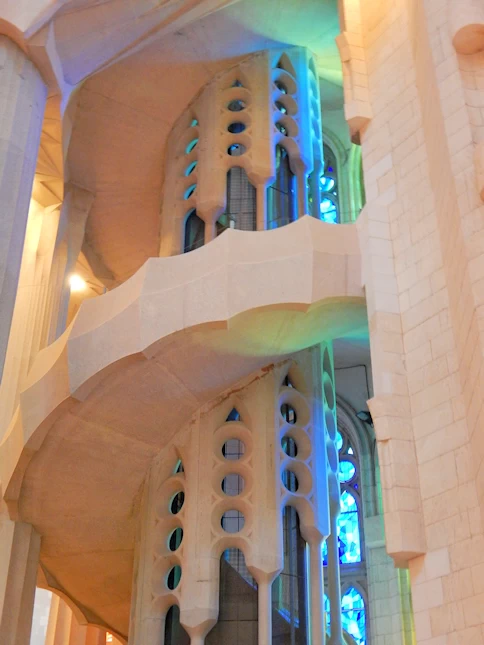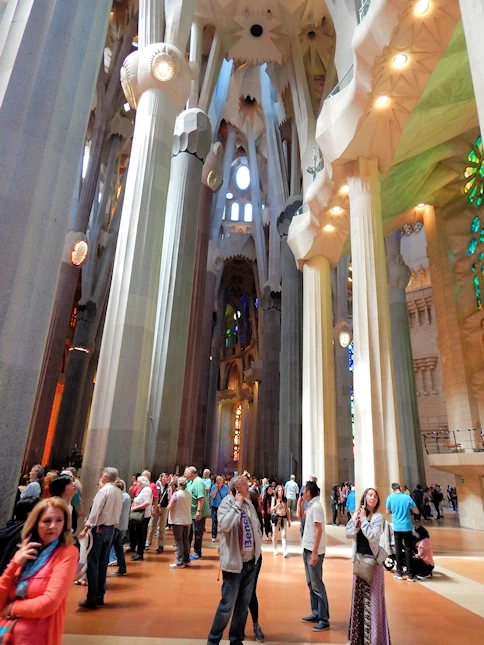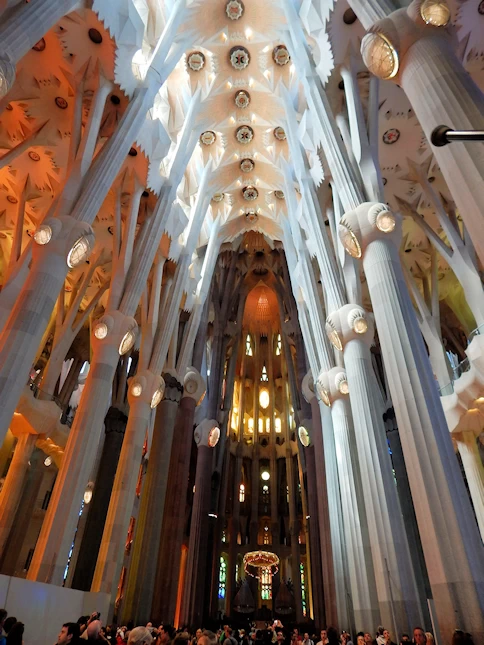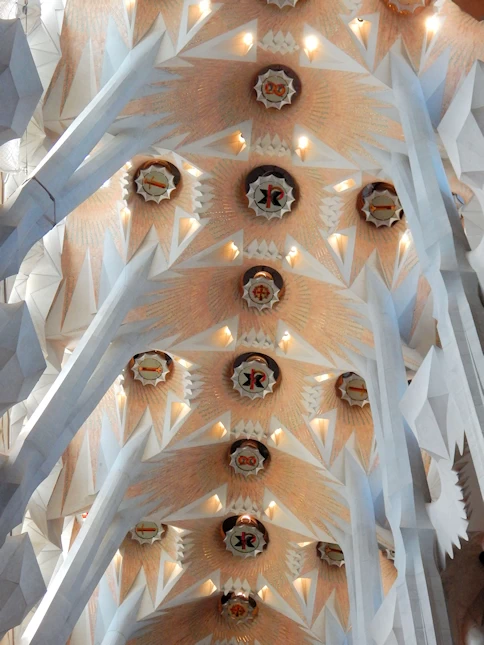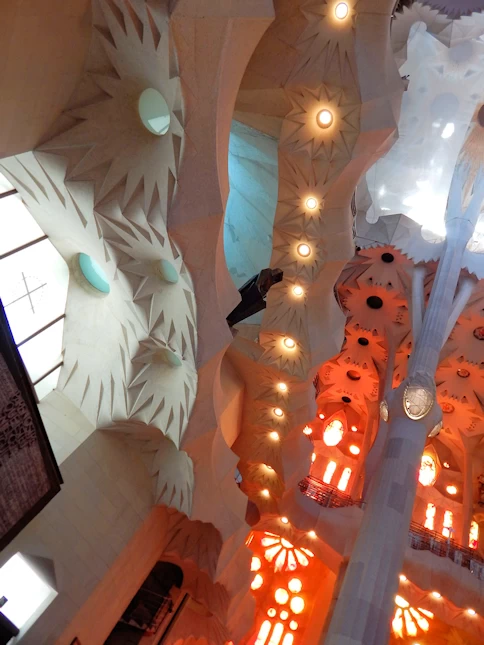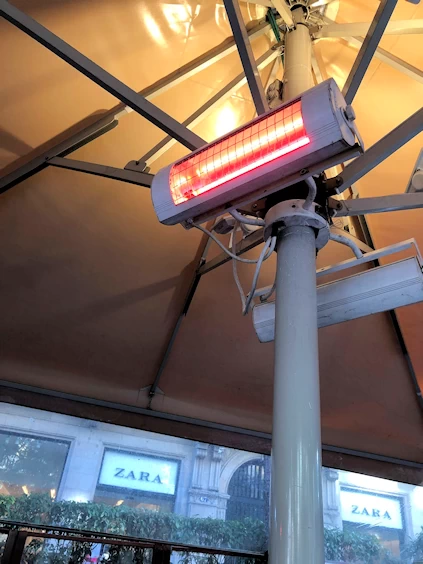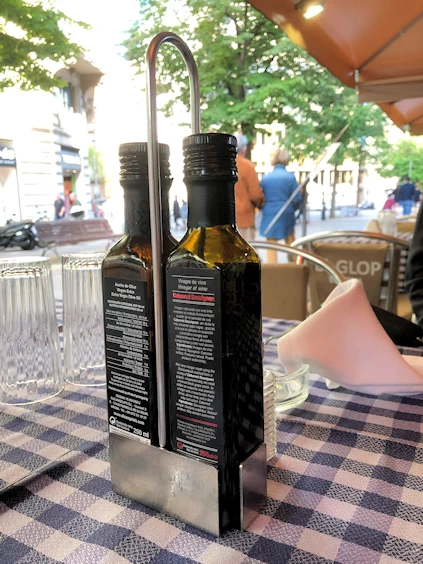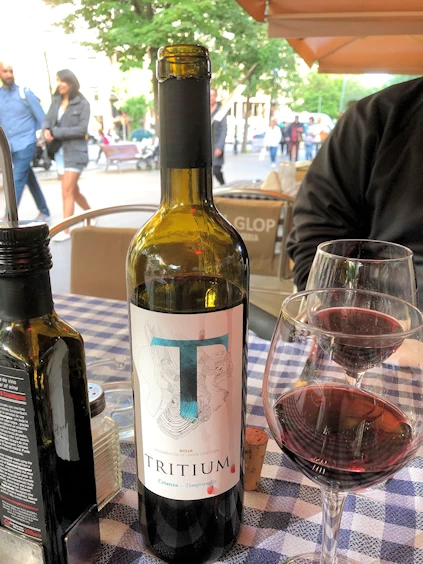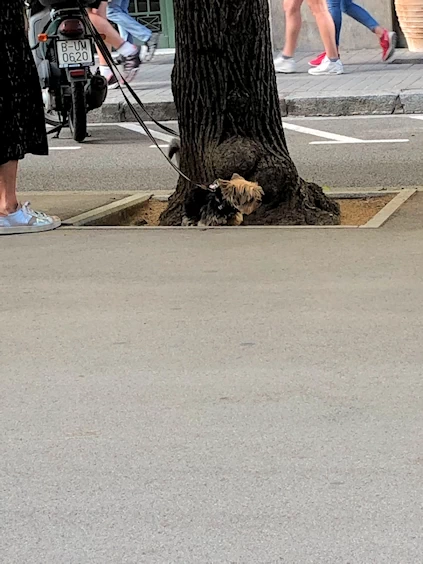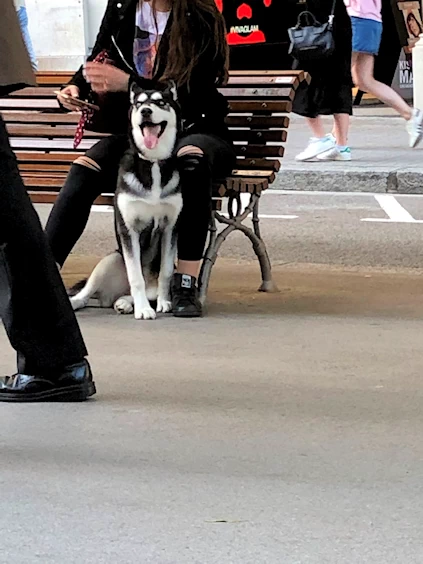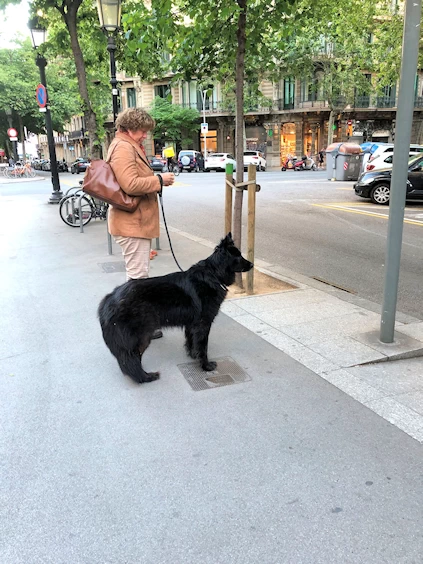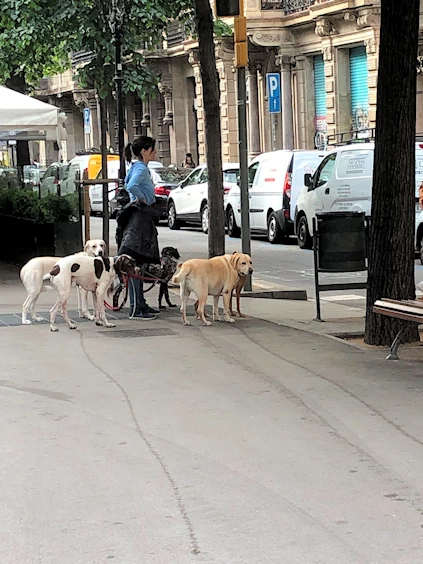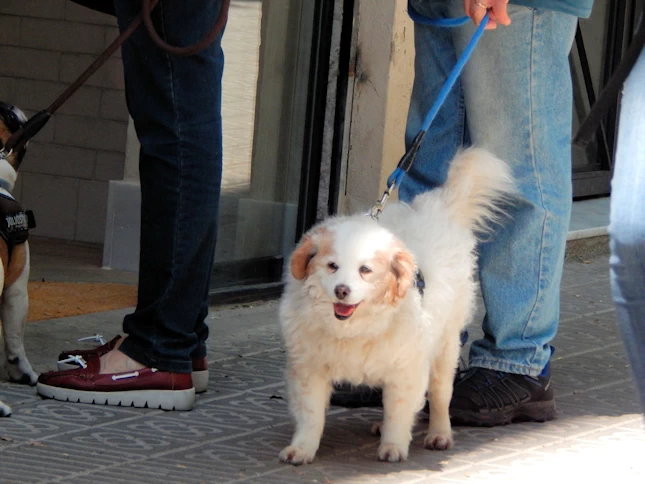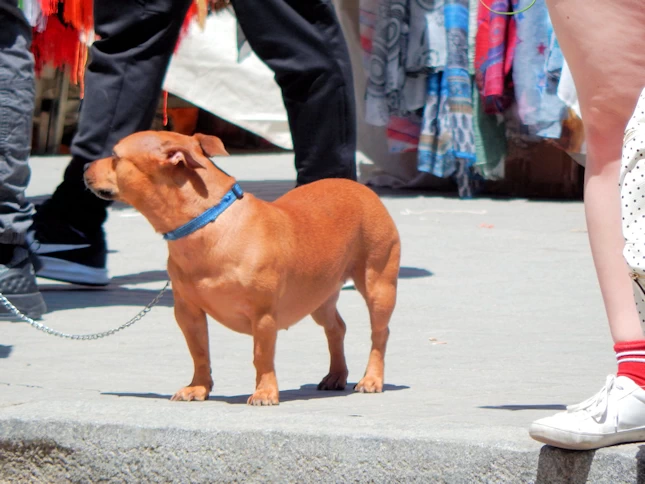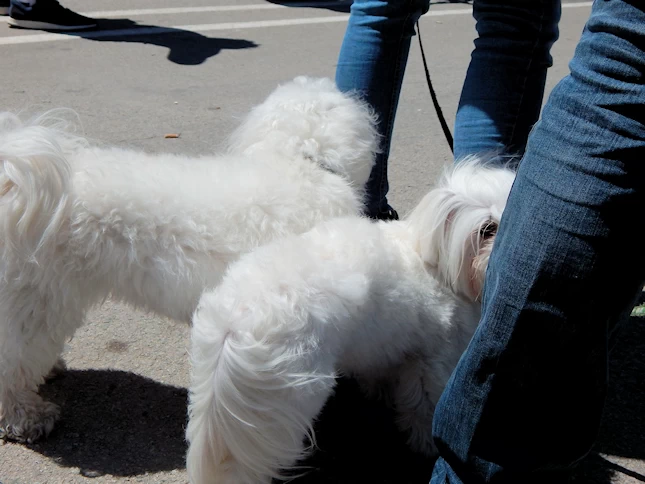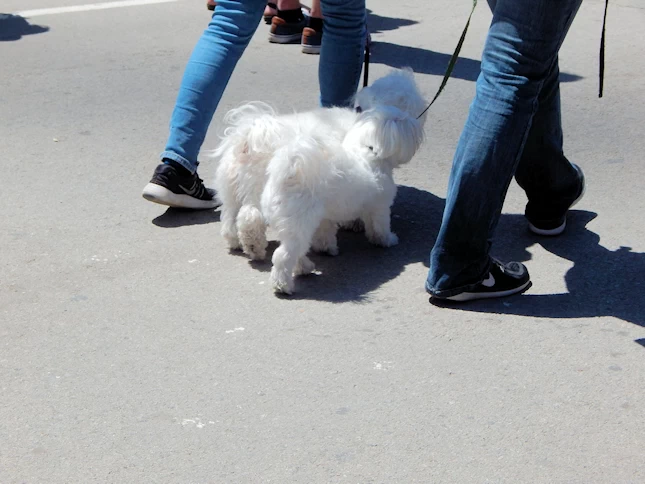Barcelona Spain
From Gaudi's Masterpieces to Tapas in the Gothic Quarter
by Celeste Lipford and Terry Lipford - last updated on 4/2/2025
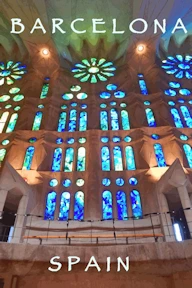
This was the final Port stop for the Norwegian Cruise Lines 'Epic' repositioning cruise from Port Canaveral, FL to Barcelona with various stops along the way. We had decided to spend some additional time here after the cruise, for several reasons, ie; I had been here repeatedly while in the Navy and was interested in seeing how the city had evolved. Celeste had not previously been here, so both of us were looking forward to doing some exploration of the city.
A Quick Barcelona History Lesson: Barcelona is 5,283.5 sea miles from Port Canaveral and 153 sea miles from Palma de Mallorca. It is the capital and largest city of the autonomous community of Catalonia, as well as the second most populous municipality of Spain. With a population of 1.6 million within city limits, its urban area extends to numerous neighbouring municipalities within the Province of Barcelona and is home to around 4.8 million people, making it the sixth most populous urban area in the European Union after Paris, London, Madrid, the Ruhr area and Milan. It is one of the largest metropolises on the Mediterranean Sea, located on the coast between the mouths of the rivers Llobregat and Besòs, and bounded to the west by the Serra de Collserola mountain range, the tallest peak of which is 512 metres (1,680 feet) high.
Founded as a Roman city ( known as "Barcino"), in the Middle Ages Barcelona became the capital of the County of Barcelona. After merging with the Kingdom of Aragon, Barcelona continued to be an important city in the Crown of Aragon as an economic and administrative centre of this Crown and the capital of the Principality of Catalonia. Barcelona has a rich cultural heritage and is today an important cultural centre and a major tourist destination. Particularly well known are the architectural works of Antoni Gaudí and Lluís Domènech i Montaner, which have been designated UNESCO World Heritage Sites. The headquarters of the Union for the Mediterranean are located in Barcelona. The city is known for hosting the 1992 Summer Olympics as well as world-class conferences and expositions and also many international sport tournaments.
Barcelona is one of the world's leading tourist, economic, trade fair and cultural centres, and its influence in commerce, education, entertainment, media, fashion, science, and the arts all contribute to its status as one of the world's major global cities. It is a major cultural and economic centre in southwestern Europe, 24th in the world (before Zürich, after Frankfurt) and a financial centre. In 2008 it was the fourth most economically powerful city by GDP in the European Union and 35th in the world with GDP amounting to €177 billion. In 2012 Barcelona had a GDP of $170 billion; and it was leading Spain in employment rate in that moment.
Barcelona Information and FAQ
Interesting Facts
- The only city in the world awarded a Royal Gold Medal for architecture by Royal Institute of British Architects.
- Barcelona is considered the “best beach city” in the world by National Geographic, but their beaches weren’t used for leisure until 1992.
- Home to the busiest pedestrian street in Spain - Las Ramblas.
- The City is older than Rome - but nobody really knows how and when Barcelona was founded.
- It is one of the world’s major cities where smoking cannabis is legal.
- It is the most visited city in Spain.
- It is the most populous city on the Mediterranean Sea.
- Host to the biggest and busiest cruise port in Europe.
- Barcelona is home to the largest metropolitan park in the world - Collserola Park which has a surface area of 84.65 square kilometers
- Has the first beach ice bar in the world.
- Home to the largest football stadium in Europe.
- Contains 68 parks, and is home to the largest metropolitan park in the world; El Parc de Collserola.
- Has more than 20 Michelin-starred restaurants.
- Is among the world’s most bike-friendly cities, with more than 180 kilometers of bicycle only lanes.
- Antoní Gaudí was not the original architect of Sagrada Familia, that was Francisco de Paula del Villar.
- Barcelona was the first city considered by Gustav Eiffel to be the home of his tower. It was declined by the Barcelona officials at the time due to not fitting the city’s landscape.
Frequently asked questions
- What are the International telephone codes for Barcelona: The telephone dialing country code for Barcelona is +34 and the city code for Barcelona is 93.
- What is the electrical current in Spain: Spain uses 220-volt AC, 50Hz electrical current with a two-pin electrical plugs. Visitors from the UK need adaptors and visitors from USA need adaptors and 110/125V transformers.
- Where is the Barcelona airport: The international airport in Barcelona is 20 km from the city centre and is called El Prat. The other international airports in Catalonia are Girona/Costa Brava and Reus.
- What are Spanish smoking laws: Since January 2011 new anti-smoking laws in Spain prohibit smoking in all enclosed public spaces including restaurants and night clubs, and also some outdoor areas, such as parks and children's playgrounds.
- Does Barcelona have city cards: Barcelona has a number of city cards for tourists and travel cards for public transport and tourist attractions. The most popular is the Barcelona Card.
- How to get to Barcelona beaches: All Barcelona beaches are on the yellow metro line L4.
- Is the Barcelona Public Transportation good: Yes, Metro stations are easy to navigate. Buses are plentiful. A well-organized train system takes you to surrounding communities and cities.
- Is Barcelona a safe city: Yes. Although Barcelona is a big city (the second-largest in Spain and the most visited city in the country) it is still considered a fairly safe place for tourists. However, as with any popular tourist destinations, such as Paris, pickpockets and bag thieves are the biggest concerns here. So be careful when walking around and taking pictures near major tourist attractions, such as La Rambla, Plaça Catalunya, and La Sagrada Familia.
Exploring Barcelona
The Norwegian Epic arrived in Barcelona harbor very early at approximately 5:00AM. Our game plan was to wait until the last possible minute to disembark and let the crowds diminish. We had a hotel room reserved at the Alexandra Hilton Hotel, so there was no need to hurry. However, even though Norwegian had originally indicated that we could depart the ship as late as 11AM, the "Freestyle Daily" ship's bulletin made it clear that everyone had to disembark no later than 8AM - so our "remain flexible" rule was followed (ie; don't panic, find a new plan & go have fun!).
Because we now had to rush through repacking everything to depart the ship, we decided to take a taxi to our hotel and see what we could arrange there. We assumed that we could undoutedly leave our luggage there while we went exploring, and when we go to the hotel front desk they were very helpful and stored our luggage for use in a secure area.
I had visited Barcelona numerous times while in the Navy, however Celeste had never been there. In the years since I had last been here, the city had grown considerably and in fact the harbor had been extensively expanded since my Navy days. The port area where my ship used to tie up had been converted to a marina (and other facilities) named "Marina Port Vell". The entire harbor area had been extensively expanded and has become the busiest cruise port in the Mediterranean area.
Where to stay in Barcelona
As of December 2023, Barcelona offered a diverse range of tourist accommodations, totaling approximately 10,444 establishments. This includes 442 hotels, 290 guesthouses and hostels, 12 tourist apartments, 9,572 homes for tourist use, and 128 hostels, collectively providing around 149,467 beds.
Below are the top five most popular hotels in Lisbon based upon the "guest rating", click here to view the full Google Search Results list for all Barcelona accommodations. Please note that if you take a look at this Google Search Results page, that you can resort this list to display it various ways. For example, to see only the top rated hotels, click on the "4 or 5 star rated" filter and Google will resort the list. Note that Google calculates a business's star rating by averaging all of the ratings published on Google for that business. The star rating is a number between 1 and 5 stars.
You should be aware that as Google collects more reviews, that their ratings lists vary over time. Here is the top five accommodations according to Google "guest ratings" as of 12/3/2024:
- Stay Together Barcelona Apartments: Set within a building dating from 1890, this upmarket apartment hotel is across the street from a metro station, and an 11-minute walk from bars, cafes and shops along La Rambla. It's 4 km from La Sagrada Familia cathedral and 15 km from Josep Tarradellas Barcelona-El Prat Airport. (5.0 guest rating)
- Hotel Praktik Èssens: On a tree-lined commercial boulevard, this hip, perfume-themed hotel in a refined 19th-century building is a minute's walk from the Passeig de Gràcia metro station. Gaudi's Casa Batlló is a 4-minute walk away. (4.8 guest rating)
- Hotel Casa Camper: This hip hotel in a converted 19th-century building in the Raval neighborhood is a 5-minute walk from both the closest metro station and the lively Mercado de La Boqueria. It's 6 minutes on foot from shops and restaurants flanking Plaça de Catalunya. (4.8 guest rating)
- Hotel La Pau: In the heart of Barcelona, just a short distance from the famous Ramblas and only 150m from the sea, we find this inspiring project: La Pau Boutique Hotel. (5.0 guest rating)
- Midtown Apartments Barcelona: Surrounded by shops and restaurants on a tree-lined street, this chic apartment hotel in a 19th-century building has a hip, urban vibe. It's 4 minutes' walk from Urquinaona metro station, 9 minutes' walk from La Rambla, a tree-lined pedestrian mall, and 2 km from Sagrada Familia, Gaudí's renowned unfinished church. (4.8 guest rating)
Sifting through a list of accommodations takes time, but if you are interested in doing your own hotel research, here is a Google Search Results link for "places to stay in Barcelona".
During our trip research & planning, we decided that we wanted to stay in Barcelona for a few days after the Norwegian Epic cruise was completed. So we put together a list of things we wanted to see & do and organized our accommodation search around the idea that it would be great to be able to walk to & from the hotel to some of these city destinations. Since we did not have a vehicle to park, and we knew we would be visiting various Barcelona restaurants, we did not require those services from a hotel that we might select.
We eventually selected the
Alexandra Hilton Hotel: Curio Collection
on Carrer de Mallorca as
our place to stay. The hotel is just a few meters away from Rambla de Catalunya, which turns into La Rambla as you
get nearer to the harbor. The hotel is also approximately 2 kilometers away from the La Sagrada Familia, which was on
our "must see" list. Very nicely situated hotel, very modern, quiet & comfortable - the staff there are very polite and
helpful & speak excellent english.
NOTE: The Rambla de Catalunya is a wide boulevard with a large island in the center of the road, which contains a number of of nice sidewalk cafes & pubs. It is one of the city's trendiest streets, with many international fashion shops, and is lined with lime trees. The street stretches from Plaça de Catalunya to Avinguda Diagonal, a distance of some 1.3 kilometres.
NOTE: Images are the property of Hilton Hotels
Barcelona Restaurants
According to Tripadvisor, the city is home to approximately 8,718 restaurants, including bars and cafés. This diverse gastronomic landscape reflects Barcelona's rich cultural heritage and its status as a premier destination for food enthusiasts. Below is a list of the top five highly rated restaurants, if you would prefer to perform your own restaurant research, click here to view a Google Search Results list for "Barcelona Restaurants".
- Disfrutar: Experimental tasting menus emphasise Mediterranean seafood in an airy, upscale dining room. Guest Rating 4.8
- Batea Barcelona: In the center of Barcelona They are located at Gran Via de les Corts Catalanes, 605 Ground Floor Guest Rating 4.7
- Soma Restaurant: Relaxed choice with a warm vibe serving innovative Mediterranean dishes, plus cocktails. Guest Rating 4.7
- La Lolita Barcelona: Has outdoor seating · Serves vegetarian dishes, outdoor seating available. Guest Rating 4.6
- Cañete: Classic dishes like seafood paella, duck cannelloni & clams in a polished setting, plus local wine. Guest Rating 4.6
Port of Barcelona
Image # 1 (left side) gives you some idea of the size of the Barcelona Harbor, it is comprised of; an industrial/commercial (freighter/cargo ships) area, a large area devoted to Cruise Ships, and a marina area ("Port Vell") for smaller vessels.
The Barcelona cruise port is currently ranked the largest Mediterranean cruise port with turnaround operations (roundtrip itineraries) and the World's 4th busiest port.
The building in the lower center of image # 1 (left side) is the Barcelona World Trade Center, shown in image # 2 (right side).
More Info for the Port of Barcelona
Image Credits:
- Both of these images are the property of Cruise Mapper
- All other images (unless otherwise noted) are the property of Just Traveling Thru, LLC.
La Sagrada Familia Map
Our first destination (after dropping off our luggage at the hotel) was the Sagrada Familia. The Familia is located 2.1 kilometers north-east of our hotel, and we could walk there all the way on the Carrer de Mallorca. Just about a 24 minute walk through some interesting areas of Barcelona.
The Temple Expiatori de la Sagrada Família ("Expiatory Church of the Holy Family") is a large unfinished Roman Catholic church in Barcelona. Designed by Catalan architect Antoni Gaudí (1852–1926), his work on the building is part of a UNESCO World Heritage Site. In November 2010, Pope Benedict XVI consecrated the church and proclaimed it a minor basilica.
When it is finally completed in 2026, La Sagrada Familía will be the tallest church in the world, a record currently held by Ulm Minster in Germany. Only time will tell if the monumental project — under construction now for 140 years — will stay on schedule, but that hasn’t deterred the millions of annual tourists who make it one of the most-visited attractions in Europe.

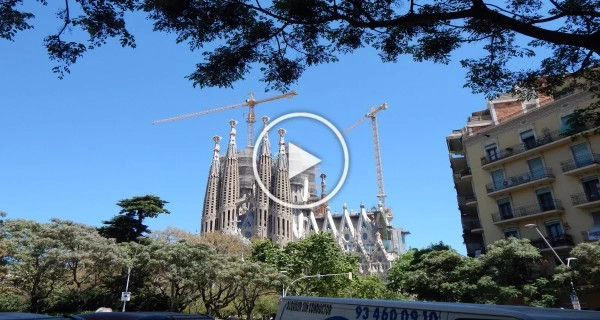
Click the video poster image to watch a video we made of this incredible church and area. Please note that this video is the propery of Just Traveling Thru, LLC.
More Info for the La Sagrada Familia Map
More Info for the La Sagrada Família
- La Sagrada Família books on Amazon:
- La Sagrada Família Wikipedia Article:
- Google Images set for La Sagrada Família:
- La Sagrada Família Website:
- Google Reviews for the the La Sagrada Família
Image Credits:
- All the above images, unless otherwise noted, are the property of Just Traveling Thru, LLC.
This is a Barcelona human tower-building tradition called "castells." It involves creating intricate human towers, sometimes reaching up to ten levels high, and is recognized as a UNESCO Intangible Cultural Heritage.
Typically castellers wear white trousers, a black sash (faixa), a bandana (mocador), and a shirt in a color characteristic of a given colla, often bearing the team's emblem. For instance, Castellers de Barcelona team wear red shirts while Castellers de Vilafranca wear green shirts and are often called "els verds" referencing their uniform.
A castell is considered a success when assembly and disassembly can be done in complete succession. The assembly is complete once all castellers have climbed into their designated places, and the enxaneta climbs into place at the top and raises one open hand. The enxaneta then climbs down the other side of the castell, after which the remaining levels of castellers descend in highest to lowest order until all have reached safety.
The building had a "street fair" kind of thing going on near the entrance, where groups of people were performing; castell demonstrations, throwing people into the air and catching them, vendors were selling souvenirs, etc. Our goal was to purchase tickets and go inside the building - but watching these groups perform was entertaining!
The Sagrada Familia is one of the world's largest Church buildings: from the entrance to the apse it is 90 metres, the five naves are limited by a 60 metre long and 45 meters wide transept. The four side naves are 7.5 metres wide each, the main nave is 15 metres - exactly twice as wide. The vault of the main nave is 45 metres high, and the side aisles are 30 metres high.
The interior columns are inclined and utilize "tree like branches". The weight is routed directly over the pillars in the ground - all this without bearing facade or exterior buttresses. The result of this ingenious solution is spectacular: the pillars and arches supported by them transform the interior of the temple into a stone forest of palm trees, lots of light streaming in through large windows and the vault.
El Glop De La Rambla Restaurant Map
Our hotel was a very short distance from the Rambla de la Catalunya; a wide boulevard with an area in the center for pedestrians and various sidewalk vendors such as small restaurants. We had walked by some of these restaurants during our hike around the city, and decided to have dinner at one of them on our first evening.
We had walked by the Glop de la Rambla earlier and really enjoyed the incredible food smells! So we decided to come back for dinner later. They are located at Rambla Catalunya, 65 08007 Barcelona and you can click here to go to their website.
NOTE: It appears that the El Glop De La Rambla sidewalk location we ate at on Rambla de la Catalunya is no longer open, they have moved to a new location and they now have 3 restaurants in Barcelona. See their website for current information.
Casa Batlló 3D Map
Our morning's first adventure was a walk to the Casa Batlló, tt was designed by Antoni Gaudí (the architect of the Basílica de la Sagrada Família & the mosaics of Park Güell), and is considered one of his masterpieces. A remodel of a previously built house, it was redesigned in 1904 by Gaudí and has been refurbished several times after that. Gaudí's assistants Domènec Sugrañes i Gras, Josep Canaleta and Joan Rubió also contributed to the renovation project. The local name for the building is Casa dels ossos (House of Bones), as it has a visceral, skeletal organic quality.
Casa Batlló is a masterpiece of modernist architecture located in the heart of Barcelona, Spain. Designed by renowned architect Antoni Gaudí in 1904, the building is a symbol of his distinctive style, characterized by organic forms, vibrant colors, and intricate detailing.
Key Features:
- Facade: The exterior is a blend of stone, glass, and colorful mosaics, resembling a fantastical underwater world. Its undulating lines mimic waves, while the balconies and windows evoke skeletal shapes, earning it the nickname "House of Bones."
- Rooftop: The rooftop is adorned with mosaic-covered chimneys and a dragon-like ridge, inspired by the legend of Saint George slaying the dragon, a prominent Catalan symbol.
- Interior: The interior is equally impressive, featuring flowing forms, custom-designed furniture, and an innovative light well that bathes the central staircase in natural light. Gaudí’s attention to detail extends to every element, from door handles to stained glass.
- Symbolism: Casa Batlló integrates symbolism throughout its design, including references to nature, mythology, and Catalan identity.
Useful Links for Casa Batlló
- Casa Batlló books on Amazon: Here is the link the Amazon Search Results page..
- Casa Batlló Wikipedia Article: Here is the link to the Wikipedia Article.
- Google Images set for Casa Batlló: Here is a link to that Images Set.
- Casa Batlló Website:
- Casa Batlló Online Tickets: Children under the age of 12 are free, tickets are date/time assigned at purchase.
- Google Reviews
La Rambla Street in Barcelona Map
Our hotel was just a few meters from the Rambla de Catalunya, which as you walk towards the harbor, eventually turns into La Rambla the famous shopping district. The street name change takes place at the Plaça de Catalunya, and then La Rambla continues all the way to the Mirador de Colom which is adjacent to the Harbor.
The tree-lined central promenade of La Rambla is crowded during the day and until late in the night. Its origins as a watercourse are reflected in the paving design, which appears to ripple like water. Along the promenade's length are kiosks that sell newspapers and souvenirs, other kiosks selling flowers, street traders, performers, and pavement cafes and bars. Several notable sights are also located within the promenade, including a mosaic by Joan Miró and the Font de Canaletes, a fountain and popular meeting point.
Along the Rambla are historic buildings such as the Palace of the Virreina and the Liceu Theatre (Liceo in Spanish), in which operas and ballets are staged. The La Boqueria market opens off the Rambla and is one of the city's foremost tourist landmarks, housing a very diverse selection of goods.
Image Credit: First image above is the property of Karen Jardine via Wikimedia Commons.
Image Credit: Above image is the property of Sergil via Wikimedia Commons using the CC BY-SA 3.0 license
More Info for La Rambla
Montjuic Castello & Area 3D Map
After walking south through La Rambla we arrived at the harbor, and decided to take one of those double decker bus tours around the city - this would allow us to see a great deal more of Barcelona than by foot and we could leave the bus tour at Montjuic Castello.
Montjuïc Castle is an old military fortress, with roots dating back from 1640, built on top of Montjuïc hill, high above the Harbor of Barcelona. It currently serves as a Barcelona municipal facility. The eastern side of the castle sits on a cliff providing amazing views of the Barcelona Harbor, which gave the fortress a commanding view of ships arriving.
The castle can be accessed by the Montjuïc cable car, a gondola lift that has its upper station near the castle entrance. The Montjuïc funicular ascends Montjuïc from the Paral·lel station of the Barcelona Metro and connects to the lower station of the cable car. The castle can also be reached by the Port Vell Aerial Tramway from Port Vell.
The castle is surrounded by the Jardins de Joan Brossa, a beautiful large park which you can traverse by a cable car (Teleferic de Montjuïc) or by foot. We choose to ride the gondola, as we wanted to maximize our time in the castle.
The name "Montjuic" comes from Latin for "Jewish Mountain", and there was originally a Jewish cemetary in this area.
Quick History Lesson
The foundation stone for the basic fortification of the Montjuic Castle was laid out in 1640. A year later, in January 1641, the fort saw its first battle, during the Catalan Revolt when the Principality of Catalonia challenged Spain's authority. On orders from the King of Spain, Pedro Fajardo, heading an army of 26,000 men, proceeded to crush the revolt. The Spanish recaptured several cities, but they were defeated at the Battle of Montjuïc by Catalan, led by Francesc de Tamarit.
Fifty years later, in 1694, new bastions and battlements were erected and the fortress became a castle. In the Siege of Barcelona (1705) the fortress was captured by the British 6th Regiment of Foot led by Lt.-Col William Southwell, paving the way for the siege of Barcelona itself. Southwell was afterwards made Governor of the castle.
The eastern side of the hill is almost a sheer cliff, giving it a commanding view over the city's harbour immediately below. The top of the hill (a height of 184.8 meters) was the site of several fortifications, the latest of which (the Castle of Montjuïc) remains today. The fortress largely dates from the 17th century, with 18th-century additions. In 1842, the garrison (loyal to the Madrid government) shelled parts of the city. It served as a prison, often holding political prisoners, until the time of General Franco.
The above info came from this Wikipedia Article.
More Info for Montjuïc Castle
Image Credits
- Image # 1 is the property of Puigalder via Wikimedia Commons and Public Domain License.
- Image # 2 is the property of Alain Rouiller via Wikimedia Commons and CC BY-SA 2.0 license.
- Image # 3 is the property of IonutDragu via Wikimedia Commons and CC BY-SA 3.0 license.
- Image # 4 is the property of Superspritz via Wikipedia Commons and CC BY-SA 4.0 license.
- Image # 5 is the property of Jaume Meneses via Wikimedia Commons and CC BY-SA 2.0 license.
- Image # 6 is the property of Lolo42 via Wikimedia Commons and CC BY-SA 3.0 license.
- All other images are the property of Just Traveling Thru, LLC, unless otherwise noted.
The Dogs of Barcelona
We saw dogs everywhere we went in Barcelona, sometimes in groups, most often singly. There was even a dog park next to the Sagrada Familia. Obviously people in Barcelona are fond of dogs, and because we are too, we decided to show these images!
Because we continually saw dogs everywhere we went, we took the time to look up the statistics. As you can see in the graph, dog ownership in Europe (according to STATISTA.COM) is very popular and Spain ranks considerably lower than we expected, especially since we were seeing so many dogs everywhere we went!
Why are dogs so popular in Barcelona?
Dogs are incredibly popular in Barcelona for several reasons. Firstly, Barcelona is known for its pet-friendly culture and its residents' love for animals. Dogs are often seen as cherished members of the family, and many people in Barcelona consider owning a dog as a part of their lifestyle.
Secondly, Barcelona offers a variety of dog-friendly spaces and amenities. The city has numerous parks, such as Parc de la Ciutadella and Parc de Collserola, where dogs can run, play, and socialize off-leash. There are also several designated dog beaches along the coast, where dogs can enjoy a splash in the sea.
Furthermore, Barcelona has a well-developed infrastructure to cater to dog owners. The city provides dog-friendly accommodation options, including hotels and apartments that welcome pets. Additionally, there are veterinary clinics, pet stores, and grooming services readily available, making it convenient for dog owners to take care of their pets' needs.
Lastly, Barcelona's mild Mediterranean climate is favorable for outdoor activities with dogs. The city experiences mild winters and warm summers, allowing residents and their furry friends to enjoy outdoor excursions and pleasant walks throughout the year.
Overall, the combination of a pet-friendly culture, ample dog-friendly spaces, supportive infrastructure, and favorable climate makes dogs popular companions among the residents of Barcelona.
Some Useful Links for Barcelona
- Barcelona History on the Britannica Website
- Info for all Spain and/or European Train Information on the 'Train Line' Website
- Barcelona Travel on the Travel & Leisure Site
- Visit Barcelona on 'Lonely Planet' Site
- 17 Things You Should Not Do in Barcelona on the 'Destination Tips' Site
- Google Search Results list for "Barcelona Restaurants"
- Discovering Barcelona on 'The Crazy Tourist' Site
- Google Search Results list for "accommodations in Barcelona"
- Barcelona Tour on the "Get Your Guide" site
- Just Traveling Thru European Travel Tips
- Just Traveling Thru Travel Planning Tips
- Visit our Youtube Channel
- Our Image Gallery for Barcelona
- Wikipedia Article for Barcelona
- Google Image Gallery for Barcelona
- Google Reviews for Barcelona, Spain
You should be aware that Norwegian Cruise Lines (NCL) varies where their ships go, as well as what ships they will reposition. To determine where NCL is sending what ships, you should visit their website. Our list of ports below, is based upon what the "Epic" did when we were onboard in 2019.
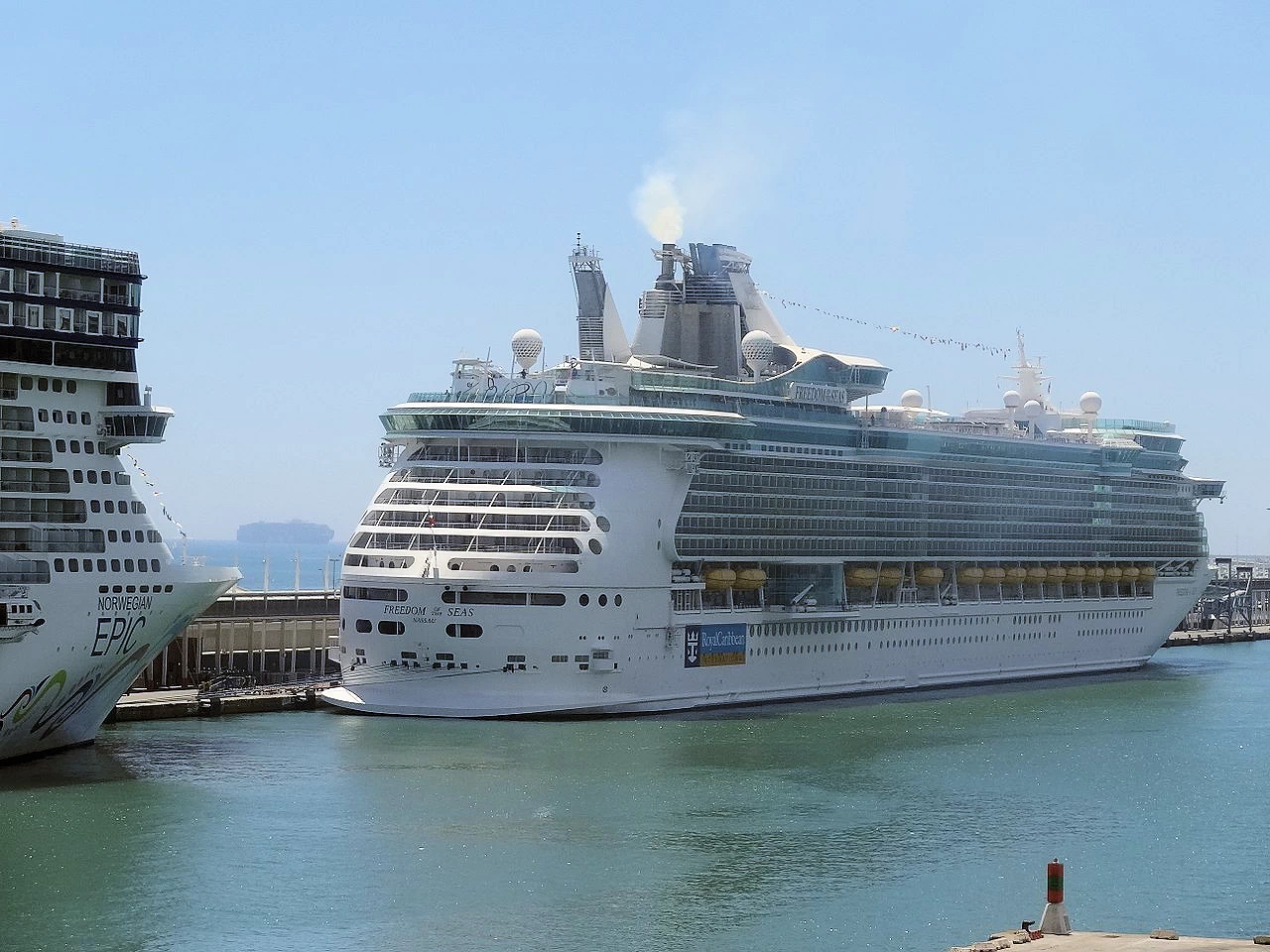
Norwegian 'Epic' Cruise Overview
Click here to read more on our Cruise Overview Page
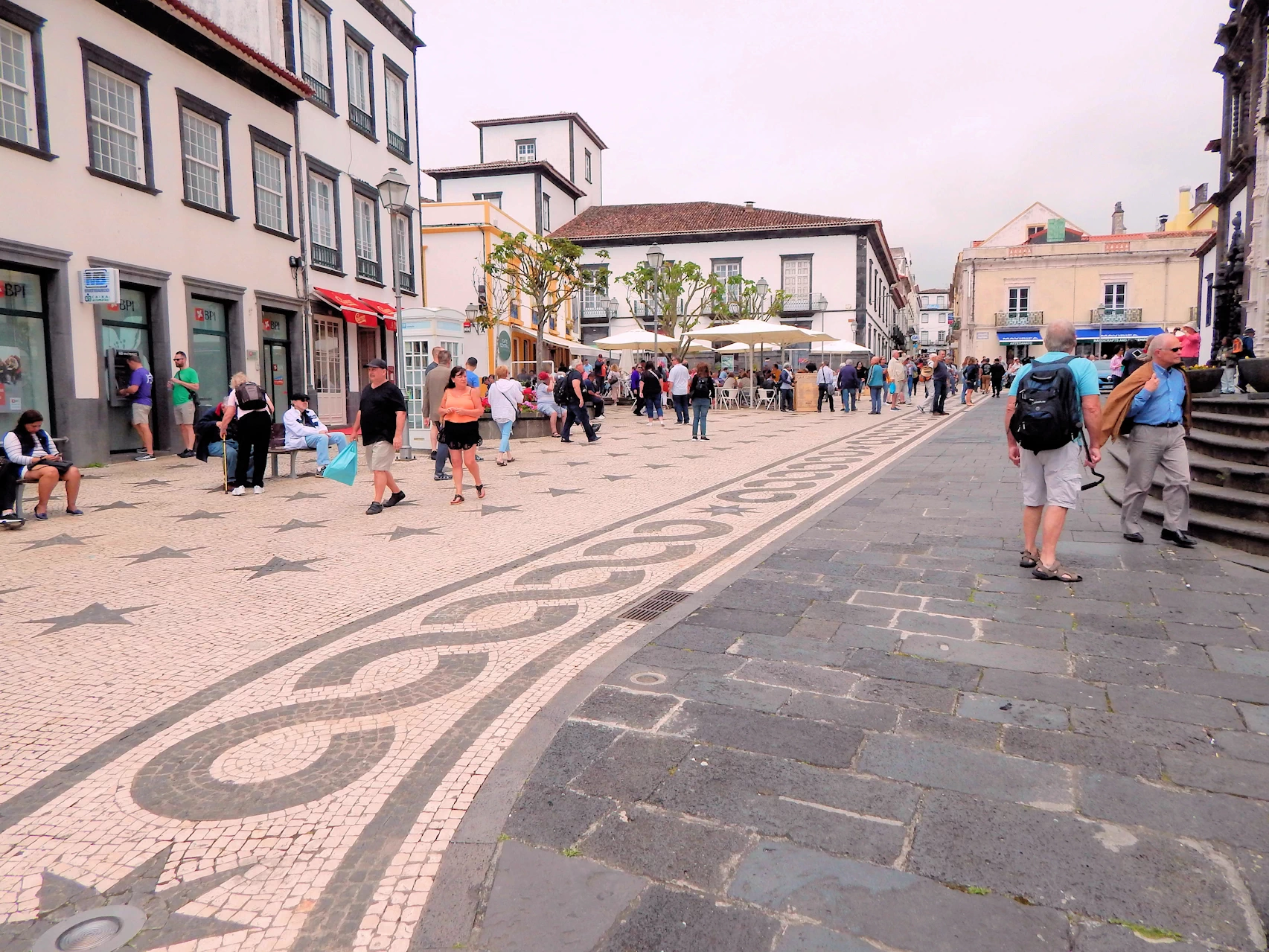
Ponta Delgada, Portugal
Click here to read more on our Ponta Delgada Page
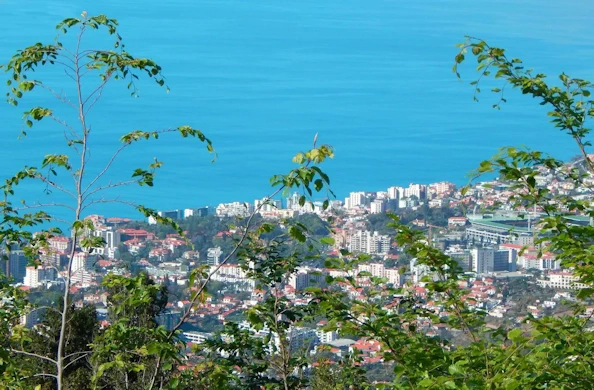
Funchal Madeira Portugal
Click here to read more on our Funchal Page
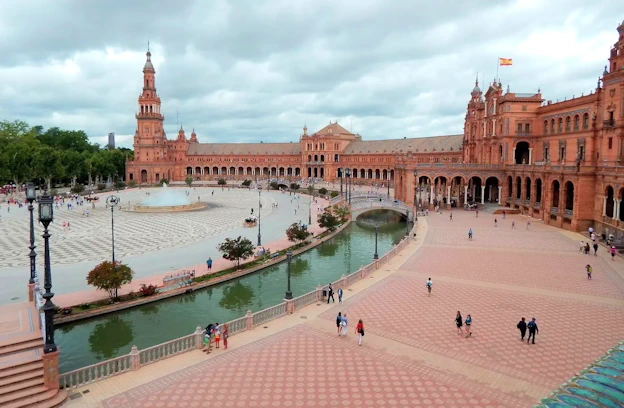
Cadiz/Seville, Spain
Click here to read more on our Cadiz/Seville Page
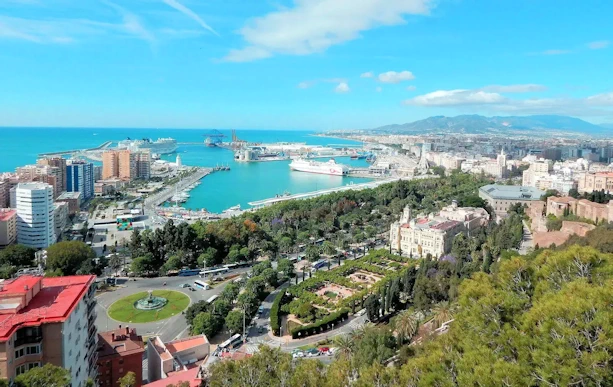
Malaga, Spain
Click here to read more on our Malaga Page
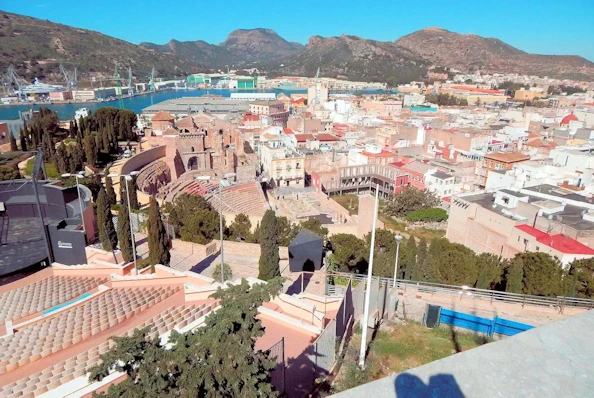
Cartagena, Spain
Click here to read more on our Cartagena Page
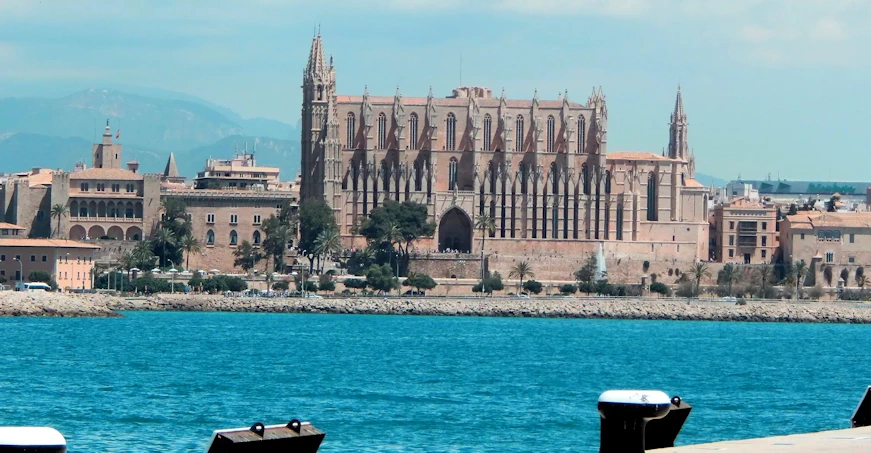
Mallorca, Spain
Click here to read more on our Mallorca Page
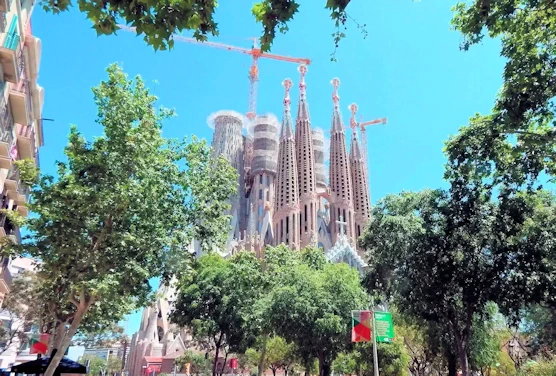
Barcelona, Spain
Click here to read more on our Barcelona Page
Note: All images featured on this page are the exclusive property of Just Traveling Thru, LLC, unless otherwise stated. When images from external sources are used, full credit is given to the original creator, along with a link to the specified license or usage terms. We are committed to respecting copyright and intellectual property rights, ensuring that all third-party images are properly attributed. If you have any questions regarding image ownership or usage rights, please feel free to contact us.
To review any of our content, make suggestions and/or comments, please click the "About" menu link at the top of this page. You will find our "Contact Us" link on that drop-down menu.

